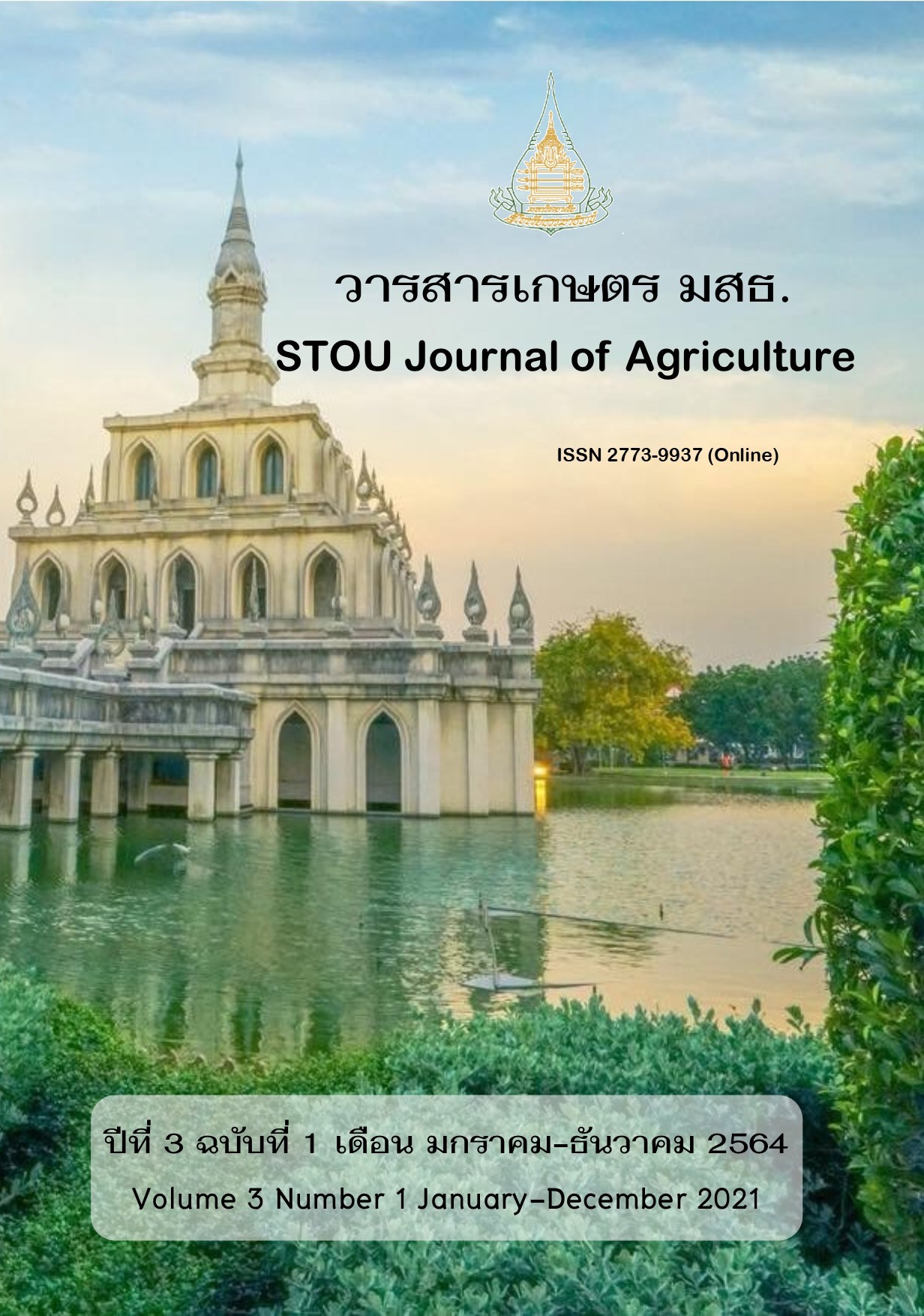การศึกษาระยะปลูกที่เหมาะสมในการผลิตหญ้านิ้วทองเพื่อใช้ผลิตดอกไม้แห้ง
Main Article Content
บทคัดย่อ
ดอกไม้แห้งเป็นผลิตภัณฑ์หนึ่งที่โครงการหลวงมีการผลิตและจำหน่ายในท้องตลาด วัตถุดิบที่นำมาใช้ผลิตดอกไม้แห้งหลายชนิด คือ หญ้าที่เก็บจากธรรมชาติ ซึ่งปัจจุบันเริ่มหายากขึ้น ดังนั้น การศึกษาการปลูกหญ้าเพื่อใช้ในการผลิตดอกไม้แห้งจึงควรมีการศึกษาอย่างจริงจัง การวิจัยนี้มีวัตถุประสงค์เพื่อศึกษาการปลูกหญ้านิ้วทองเพื่อนำมาใช้เป็นวัตถุดิบในการทำดอกไม้แห้ง วางแผนการทดลองแบบสุ่มสมบูรณ์ภายในบล็อก ประกอบด้วย 4 ทรีทเมนต์ คือ 20×30, 30×30, 30x40 และ 30x50 เซนติเมตร ทรีทเมนต์ละ 3 ซ้ำ เพื่อเป็นข้อมูลในการนำไปส่งเสริมให้เกษตรกรปลูกและสร้างรายได้ต่อไป จากการศึกษา พบว่า ระยะปลูกหญ้านิ้วทองที่ให้น้ำหนักผลผลิตมากที่สุด คือ 30×30 เซนติเมตร โดยมีน้ำหนักสดและน้ำหนักแห้ง 414 และ 152 กิโลกรัมต่อไร่ ตามลำดับ รองลงมาคือ ระยะปลูก 30X40 เซนติเมตร มีน้ำหนักสดและน้ำหนักแห้ง 346.65 และ 145.8 กิโลกรัมต่อไร่ จากการสอบถามเกี่ยวกับคุณภาพดอกจากผู้รับซื้อและผู้เชี่ยวชาญหลังจากย้อมสีแล้วพบว่า แต่ละทรีทเมนต์ให้ผลผลิตที่มีคุณภาพดีสามารถนำไปผลิตเป็นการค้าได้ โดยระยะปลูกที่เหมาะสมต่อการปลูกคือ 30X40 เซนติเมตร เนื่องจากเป็นระยะที่ทรงพุ่มหญ้านิ้วทองไม่ชิดกัน อีกทั้งยังให้ผลผลิตไม่แตกต่างกับระยะ 30×30 เซนติเมตร
Article Details
บทความที่ได้รับการตีพิมพ์เป็นลิขสิทธฺ์ของวารสารเกษตร มสธ.
ข้อความที่ปรากฎใน
เอกสารอ้างอิง
ชลลดา สามพันพวง (2549). อิทธิพลของอายุต้นและระยะเวลาการให้วันยาวที่เหมาะสมต่อการออกดอก ของหญ้าหางกระต่าย (Lagurus ovatus L.) เพื่อผลิตเป็นดอกไม้แห้ง. (วิทยานิพนธ์ ปริญญามหาบัณฑิต) มหาวิทยาลัยเกษตรศาสตร์. กรุงเทพฯ.
พิสุทธิ์ สุขเกษม, ประยูร ครองยุติ และสมจิต อินทรมณี. (2543). ระยะปลูกและความถึ่ของการตัดต่อผลผลิตและส่วนประกอบทางเคมีของหญ้ากินนีสีม่วงในดินชุดบ้านทอน. ใน รายงานผลการวิจัยประจำปี
2543. กองอาหารสัตว์ กรมปศุสัตว์ กระทรวงเกษตรและสหกรณ์. หน้า 169-180.
วิทยา สุมามาลย์ และพรชัย ล้อวิลัย. (2013). อิทธิพลของระยะปลูกที่มีต่อผลผลิตและคุณค่าทางโภชนะของหญ้ากินนีสีม่วงภายใต้การให้น้ำชลประธาน. J. Sci. Techol. MSU, 33(1), 35-45.
McLeod, C.C. (1972). Field Investigation Report May 1970 – October 1972. Borabue Pasture and Range Development Center, Department of Land Development, Thailand
Thongtham, C., M.L. (1978). Dried Ornamental Plant Production Project. Royal project foundation. Bangkok.


